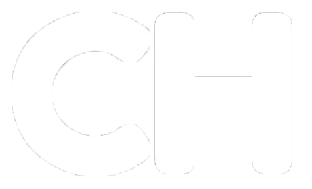About Caribherp
Caribherp is a non-profit database that functions as a quick identification guide to the more than 1000 species of amphibians and reptiles of the Caribbean islands. The region covered includes essentially all Caribbean islands, with a requirement of having at least 20 meters of water depth between the island and the mainland (Hedges et al. 2019. Caribbean Herpetology 67: 1-53). The Bahamas, Turks and Caicos, and Trinidad and Tobago are included, as well as many islands historically omitted from the definition of the “West Indies.”
Caribherp has grown over the last two decades, with major changes occurring in the latest version (v3.0) released in October of 2025. The site is also updated continuously between major releases. Accounts of each species, appearing in the main viewing area, include taxonomy, standardized common name, endemic status, and conservation threat status (IUCN Red List). Species accounts also include color images and distributions overlain on Google maps, allowing for terrain or satellite map viewing options and zooming. If available, sounds and videos are included.
Classification: The original author(s) and date of publication of the species name are listed. If the authors are placed in parentheses, this indicates that the species was originally described in another genus. Standardized common names follow Caribbean Herpetology 67: 1-53.
How to search: Start by using either the search box in the main viewing area or the geographic toolbar on the left. Searches always result in full species accounts. For example, “all regions” in the geographic toolbar will build a list of all 1000+ accounts. Users may also see a list of species occurring at a single location by entering the coordinates in the “Search by Coordinates” toolbar. All elements in an account can be searched as well. For example, typing “1830,” “earless,” or “Tropidophiidae” in the search box results in lists of the four species described in 1830, the six species with “earless” in the common name, or the 29 species belonging to the family Tropidophiidae, respectively.
Copyright and use: Caribherp is intended for personal, academic, or other educational purposes. Its wide use in research (with citation) is encouraged, including use of island lists of species, their common and scientific names, and distributional data. The download feature is helpful for that purpose. However, the site and all graphical items (animal images, maps, etc.) and sound files are copyrighted, and therefore permission is required before you make use (e.g., reproduction, publication, duplication on a web site, etc.) of any images, videos, maps, and sound files.
Citation: (will be added soon)
Caribherp is web mobile friendly. Users of this site may find several related sites to be useful. CaribMap contains historical and topographic maps in high resolution. Caribbean Herpetology is a non-profit, peer-reviewed, and open access journal. CaribNature is a multimedia site for Caribbean conservation awareness, with its initial focus on Haiti. See also Haiti National Trust (HNT) a non-profit organization whose mission is to save and protect the environment and biodiversity of Haiti for future generations. HNT works with the government of Haiti to establish new national parks and protect existing parks and biodiversity hot spots.
Acknowledgments: The current version (v3) of Caribherp was developed at Temple University, primarily with the assistance of Angela Lu, Aidan Buehler, Kelly Liu, and Stella Anderson. The previous major version (v2), released in 2010, was developed at Penn State University with the assistance of Mandy Hippenstiel and Lainey Lee. Those who assisted with the initial development of Caribherp, starting with its first release in 1999, also at Penn State, were Anne Beausang, Paul Clegg, Michelle Cook, Anthony Geneva, Jennifer Hines, Genna M. Lutz, Rebecca Ruskin, Heather Saylor, Rebecca Stauffer, Jennifer Thompson, and Teresa van Wagner. Bob Henderson, Bob Powell, and Richard Thomas have assisted with on countless occasions. Alberto Estrada helped enormously with the editing of frog calls. Others have graciously provided information, including (not a complete list) Roberto Alonso, Yvonne Arias, Aaron Bauer, Craig Berg, Michel Breuil, Sandy Buckner, Patricia Burrowes, Ron Crombie, Jenny Daltry, Luis Díaz, Bill Duellman, Sandy Echternacht, Alberto Estrada, Eladio Fernandez, Ansel Fong, Tony Gamble, Orlando Garrido, Rich Glor, Adrian Hailey, Marcelino Hernandez, Julia Horrocks, Sixto Inchaustegui, Sloane Jackson, Jeremy Jacobs, Falin Joglar, Susan Koenig, Miguel Landestoy, Skip Lazell, Jonathan Losos, Luke Mahler, Anita Malhotra, Miguel Nelson, Gad Perry, Renata Platenberg, Ariel Rodriguez, Javier Rodriguez, Lourdes Rodriguez, Marcos Rodriguez, Jose Rosado, Alejandro Sánchez, Roger Thorpe, and Byron Wilson. John Murphy assisted greatly with the species from Trinidad and Tobago, contributing most of those images and distributional data. Randy McCranie assisted with those species from Honduran islands. Many others, including students and colleagues too numerous to list, have assisted in various ways over the years.
Image credits: The photographer (copyright owner) of each image is indicated in the lower right-hand corner.
Contact: info@caribherp.org. Please let us know if you find any errors, have any questions, or if you wish to donate an image for a species lacking one.
S. Blair Hedges, Ph.D
Laura H. Carnell Professor
Director, Caribherp
Director, Center for Biodiversity
Temple University, Philadelphia, PA






